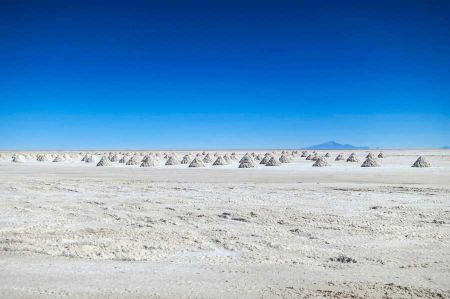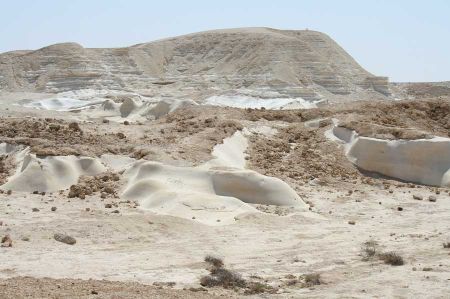Tuzköy - Village ravaged by cancer in Cappadocia
- Written by Portal Editor
The caves, rock houses and grand stone formations in Turkey's Cappadocia region draw tourists from around the world. Nestled among these natural wonders, however, lies a village where the earth is believed to deliver death rather than rewards.
Nearly half the deaths in this impoverished village and two others nearby are from a rare cancer known as mesothelioma, which is caused by a mineral that's found in abundance in the area. Local authorities are so alarmed that a relocation of residents is currently under way.
“One plan is to demolish the old village, bury it to a depth of one-and-half meters and then plant over it,” Mayor Ümit Balak said. The Turkish government, however, hasn't made a final decision whether to bury Tuzköy under soil, pave over it with asphalt or just try to keep people away. Dubbed “cancer village” in the media, Tuzköy was declared a hazardous zone in 2004, and about 250 families have already been moved to new housing a mile away. The rest of the population of 2,350 people is expected to be relocated when additional housing is ready. The moves have been subsidized by the state.
Cases of mesothelioma, a cancer of the lining of the chest or abdomen, are also present in the nearby villages of Sarıhıdır and Karain. “The number of cases of mesothelioma in Tuzköy has been around 600 to 800 times higher than world standards,” said Murat Tuncer, who heads the Health Ministry's department for cancer control. About 48 percent of all deaths in the three villages have been from mesothelioma. This region accounts for a quarter of the 40 to 60 new cases of mesothelioma diagnosed in Turkey every year, Tuncer said.
 Residents of Tuzköy are believed to have inhaled crystal fibers of the mineral erionite, which is present in stones and paint used for home construction as well in the roads and fields. Moving residents just a short distance away should eliminate the risk, said Tuncer. Erionite is found in volcanic rock and is classified as a Group 1 carcinogen by the International Agency for Research on Cancer (IARC), which is part of the World Health Organization. That means it's a substance that is known to cause cancer; other carcinogens in the group include asbestos, arsenic and tobacco.
Residents of Tuzköy are believed to have inhaled crystal fibers of the mineral erionite, which is present in stones and paint used for home construction as well in the roads and fields. Moving residents just a short distance away should eliminate the risk, said Tuncer. Erionite is found in volcanic rock and is classified as a Group 1 carcinogen by the International Agency for Research on Cancer (IARC), which is part of the World Health Organization. That means it's a substance that is known to cause cancer; other carcinogens in the group include asbestos, arsenic and tobacco.
İzzettin Barış, a retired professor who has studied the occurrence of mesothelioma in the area, said erionite is found in various parts of the world, including the US state of Nevada. “In most other countries the cancerous mineral is generally found far deep underground. InTurkey, however, it is very close to the surface,” Barış said. “And people often use the local rock,which has erionite, to build their houses.”
Some people cite other possible factors for the high cancer rates, including the genetic disposition of some villagers. A few residents also blamed lifestyle, “The people ... spend all day in smoke-filled coffeehouses,” said farmer Muharrem Sevim, a 44-year-old father of three.
There is only one doctor, one nurse and one midwife in Tuzköy. There are two cemeteries in the village, and both are full. They are now opening a third cemetery. “We are lost in differing rumors,” said İsmet Bilgen, a mother of six and grandmother of five. “I don't know what we can trust. May God help us.”
Health officials have been aware of this problem for at least two decades, and the government had considered relocating residents then demolishing the village and burying it as far back as 1999. Financial constraints, bureaucratic hurdles and a string of unstable governments have slowed down efforts to address the problem over the years.
Tuncer said the government was still considering the best option to rehabilitate Tuzköy and prevent future incidences of cancer. Parliament has also set up a committee to look into ways to deal with the problem. Authorities hope that “New Tuzköy” will be completed by the end of 2011. Villagers will be able to make a living from agriculture, animal husbandry and from a nearby salt mine.
Tuzköy is 35 kilometers from the nearest tourist attractions in the region, and 50 kilometers from Ürgüp, Göreme and other towns where the local tourist industry is concentrated. There is no indication of health threats at these popular sites, which were formed by volcanic deposits millions of years ago and later sculpted into underground cities and other dwellings by early civilizations.
Tuzköy has about 1,000 houses, and some areas already feel like a ghost town. Many structures are used to shelter only animals. Some are locked or just abandoned. “It's true, people die of cancer here. There's nothing shameful in admitting it,” said Ahmet Balta, a 51-year-businessman who said many of his own relatives had died of cancer at a young age. “Academics, the government and the media have to take the problem seriously,” he said.
Article by BURHAN ÖZBILICI TUZKÖY
In 1975 a study of three small villages in central Cappadocia—Tuzköy, Karain and Sarıhıdır—found that mesothelioma was causing 50 % of all deaths. Initially, this was attributed to erionite, a zeolite mineral with similar properties to asbestos, but detailed epidemiological investigation demonstrated that the substance causes the disease mostly in families with a genetic predisposition to mineral fiber carcinogenesis. The studies are being extended to other parts of the region.
Please read as well:
Sivrihisar - birthplace of the fool Nasreddin Hoca
Hike to the Berger monument near Witten
